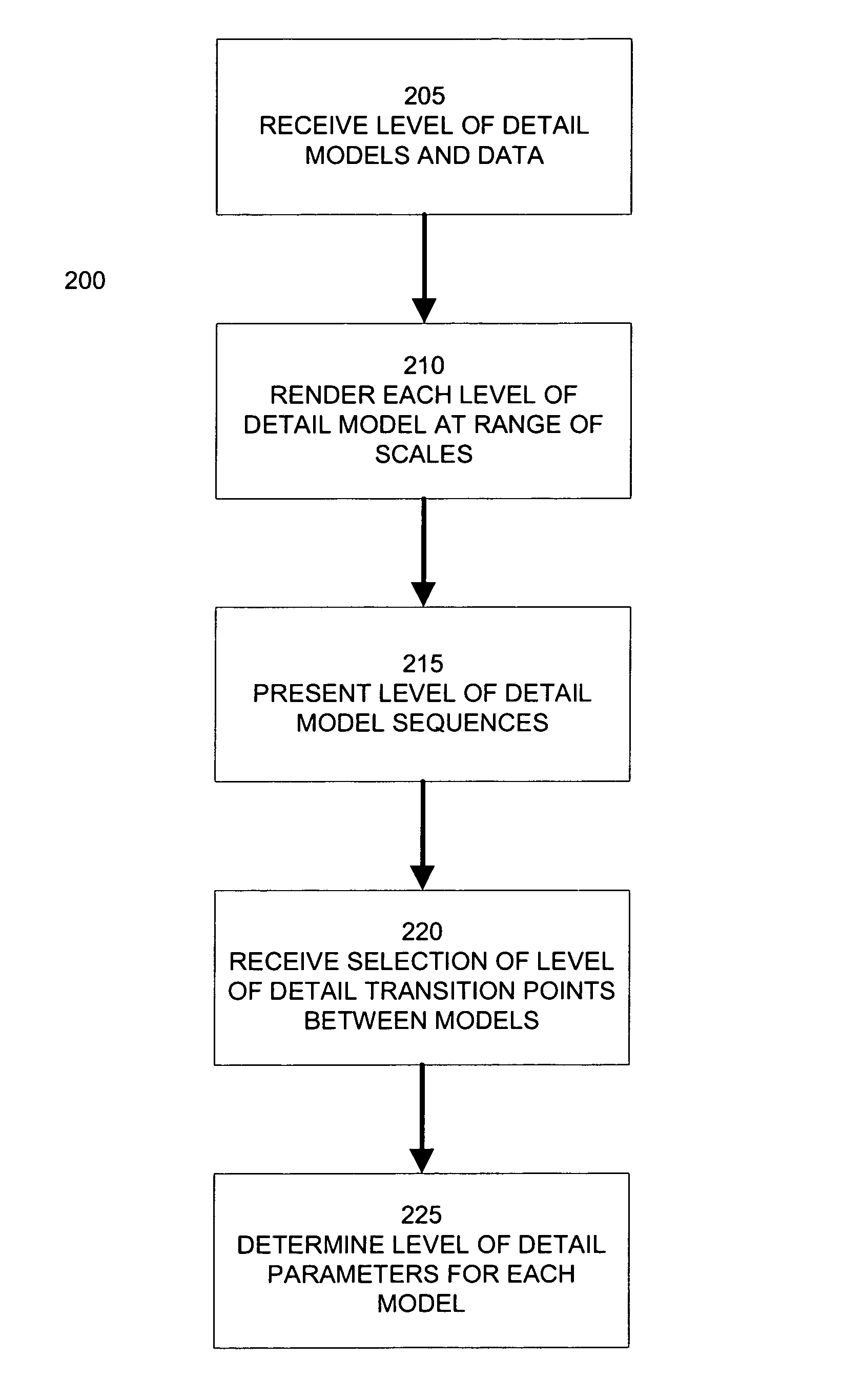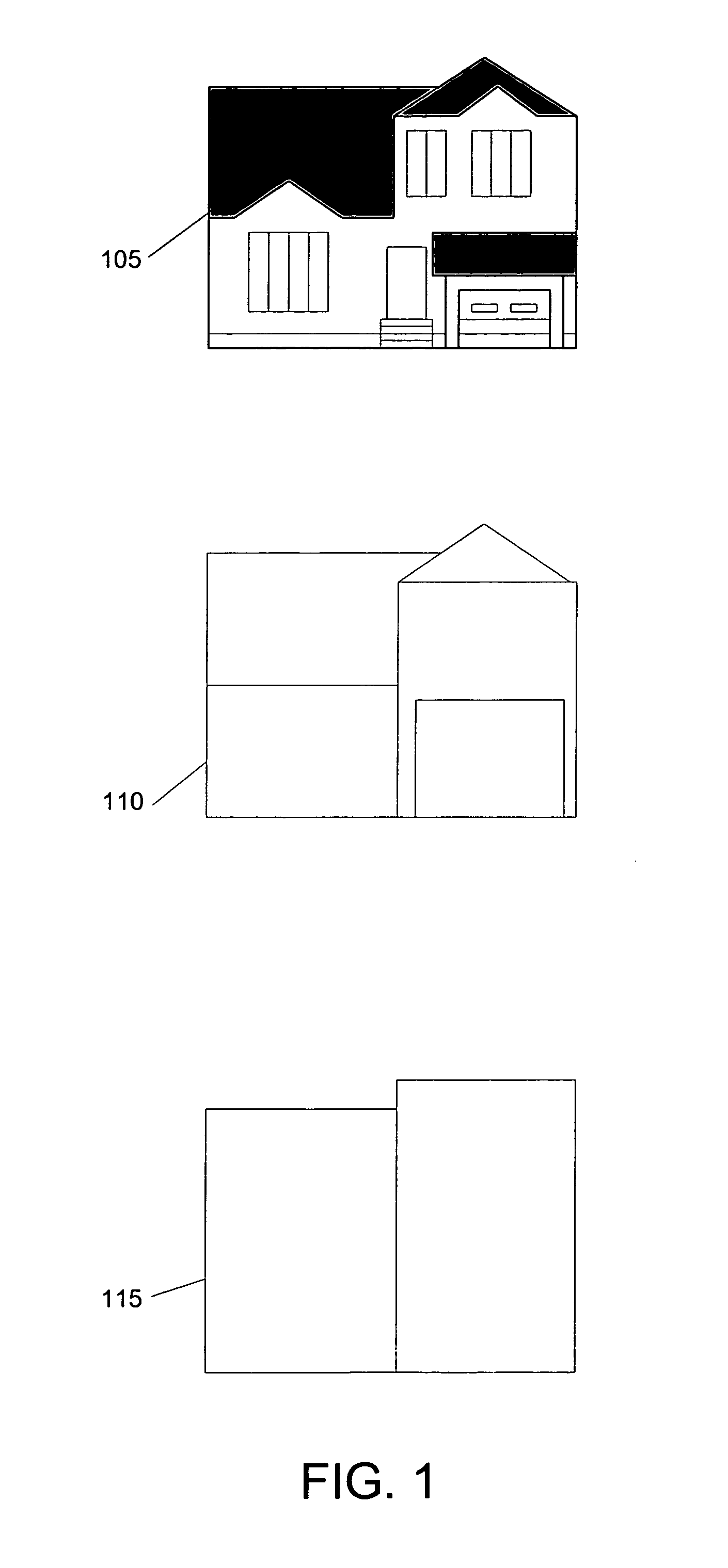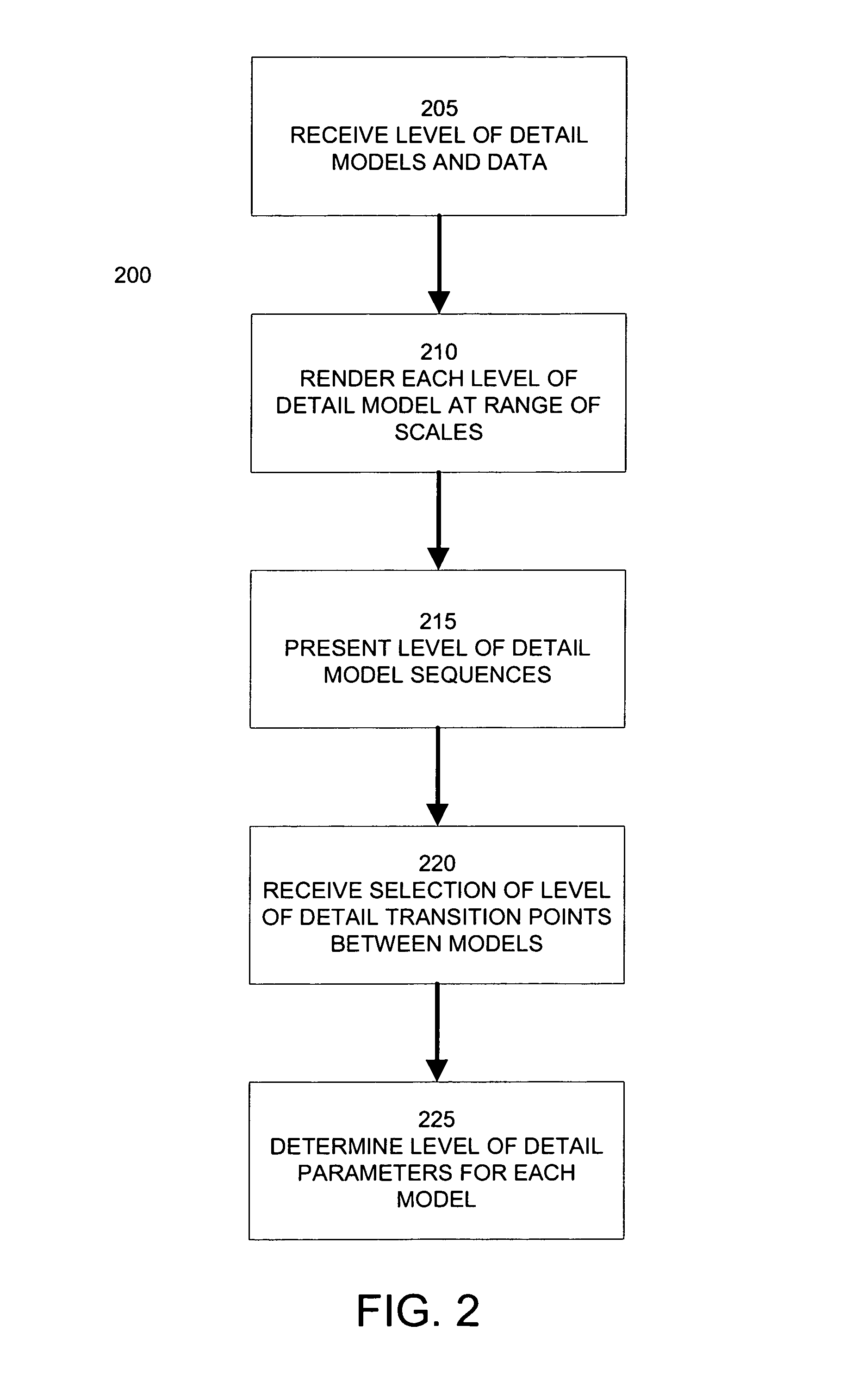Setting level of detail transition points
a transition point and detail technology, applied in the field of computer graphics, can solve the problems of increasing the computational cost of rendering, increasing the amount of computations and memory required, and often computationally expensive rendering
- Summary
- Abstract
- Description
- Claims
- Application Information
AI Technical Summary
Benefits of technology
Problems solved by technology
Method used
Image
Examples
Embodiment Construction
[0016]FIG. 1 illustrates example versions of an object at different levels of detail suitable for use with embodiments of the invention. In this example, the object is a three-dimensional model of a house. A first version 105 of the object is a model of the house with a large amount of complexity. In this example, version 105 of the object includes complex geometric features such as doors and windows. In some applications, version 105 may also include high resolution texture maps and complicated shader programs to specify the color and other optical properties of its surface.
[0017]A second version 110 of the object has less complexity than version 105. In this example, the version 110 of the house object omits many of the details present in version 105. In some applications, the shapes of features in version 105 of the object may be changed to less complex approximations in version 110 of the object. In some applications, optional texture maps and shader programs associated with ver...
PUM
 Login to View More
Login to View More Abstract
Description
Claims
Application Information
 Login to View More
Login to View More - R&D
- Intellectual Property
- Life Sciences
- Materials
- Tech Scout
- Unparalleled Data Quality
- Higher Quality Content
- 60% Fewer Hallucinations
Browse by: Latest US Patents, China's latest patents, Technical Efficacy Thesaurus, Application Domain, Technology Topic, Popular Technical Reports.
© 2025 PatSnap. All rights reserved.Legal|Privacy policy|Modern Slavery Act Transparency Statement|Sitemap|About US| Contact US: help@patsnap.com



